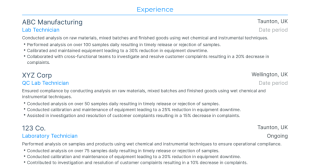How To Become Pci Compliant – The PCI DSS standard provides more than 300 security controls and 12 security requirements, from network security to encryption standards sufficient to protect card data.
With the value of digital payments increasing every year, it is important for any business to ensure that you can process these payments in accordance with the PCI DSS standard.
How To Become Pci Compliant
Below we cover all 12 PCI requirements in a short and easy guide.
What Does Pci Compliance Mean? And The 12 Requirements Of Pci Dss
The PCI DSS standard defines security requirements for businesses that store, process, and transmit cardholder data. PCI compliance is important for any merchant or service provider that manages card transactions and cardholder data.
PCI Compliance Meets all 12 PCI DSS requirements. These range from establishing network security measures to restricting user access to cardholder information.
If all of these conditions are met, the payment card’s operating environment (and the company itself) is considered PCI compliant.
It should also be noted that the PCI DSS standard is subject to updates as technology and threats evolve.
How To Become Pci Compliant? Pci Dss 12 Requirements
In 2022, the PCI governing body announced the next version of PCI DSS, v4.0, which will be effective after March 31, 2025. PCI DSS v4.0 introduces new requirements and several changes to current requirements.
You can think of it as a road map detailing all the policies, procedures, and implementation requirements that must be followed in order to comply with the 12 requirements of PCI DSS.
Today, many transactions are carried out through networked computers. Without proper protection, unauthorized users can gain access to payment system networks.
Firewalls monitor traffic to and from your network and filter unauthorized access to your information by ensuring that cardholder information is only shared over secure connections.
Pci Dss: Relevance And Compliance Requirements To Be Met By Merchants
To meet this demand, companies must build and configure firewalls and create rules to determine what traffic is allowed on the network. The standard also requires companies to review their configuration rules every six months.
Default passwords and settings for most network devices are often widely known, making it easy for hackers to gain access to your internal network. PCI DSS requires companies not to use passwords and to change passwords before installing a system on your system.
This requirement describes the specific steps companies must take to protect stored card information – whether it is printed, stored locally or transmitted.
Cardholder information means any information on a payment card, including PIN codes, customer personal information and card details.
How To Become Pci Compliant
The requirement also states that companies must only retain card information necessary to meet their business needs. The data you store must be encrypted using industry-accepted encryption methods such as Advanced Encryption Standard, also known as AES.
This requirement is intended to protect cardholder data when transmitted over open public networks such as the Internet, wireless technology, cellular technology, general packet radio service (GPRS) and satellite communications.
When card information must be shared on open public networks, companies must use strong encryption technology to mask information from unauthorized users.
PCI DSS also states that companies should never send unverified PANs through end-user communications such as email, instant messaging, SMS and chat.
Pci Dss Firewall Requirements
Malware can enter a network through email or other Internet activity. Antivirus software should be installed and regularly updated to protect cardholder data from such threats.
The purpose of claim 6 is to ensure that the CDE has a software management process. This requirement applies to all applications in your environment, not just applications you purchase or develop internally.
PCI DSS requires companies to establish timely security programs to protect cardholder data. It also describes software development best practices for preventing vulnerabilities.
Access control allows a company to determine which users can access cardholder information. As a rule, PCI DSS provides that authorization should be granted on a need-to-need basis.
Pci Compliance: A Quick Guide
Requirement 7 states that businesses should restrict access to card information to employees who need the information to perform their jobs.
PCI DSS also requires companies to assign a unique identifier to each employee who has access to system components. This allows the company to maintain a history of users’ access to various aspects of cardholder information in the event of a data breach.
The purpose of this requirement is to limit physical access to card information to personnel on site who need the information to perform their duties. PCI DSS requires companies to clearly identify on-site employees from visitors, for example by identifying them with identification badges.
Requirement 9 also outlines the steps businesses must take to protect media, which is any paper or electronic medium containing card information. This includes keeping backups of media in a secure location and destroying media when no longer needed.
Pci Dss 4.0
Question 10 focuses on creating a log and tracking tasks in one account. This helps a company quickly identify the source of a vulnerability or attack when a problem occurs.
Enterprises should implement automated audit trails that link access to all parts of the system to each user. You should also provide audit logs so that they cannot be changed.
The purpose of Requirement 11 is to maintain the ongoing security of internal and external systems and processes through continuous testing.
These tests include quarterly network vulnerability scans and annual penetration testing. Intrusion detection techniques should also be deployed to detect and prevent network intrusions.
Azure Pci Dss Compliance
The latest PCI DSS requirement requires companies to establish and maintain an information security policy that will impact security operations throughout the organization.
Our experts can help you pre-assess your card data environment to determine if you are ready for a PCI audit or if you need to address non-compliance issues first. Do you know which PCI compliance level you belong to? Find out what you need to know about PCI DSS in our comprehensive guide
, it’s no wonder that so much attention is paid to protecting your card information. If your business processes cardholder data in any way, you must ensure that it complies with PCI DSS requirements.
The Payment Card Industry Data Security Standard (PCI DSS) is a set of security standards established in 2004 by the Payment Card Industry Security Standards Council (PCI SSC). PCI SSC consists of major credit card companies (MasterCard, Visa, American Express, JCB International and Discover Financial Services).
Pci Compliance For News Publishers And The Media Industry
A company is considered PCI compliant if it consistently meets PCI DSS requirements and can effectively protect cardholder data by maintaining an appropriate level of card information security.
A PCI compliant business assures customers that the security of their data and confidential information is taken seriously. This is a surefire way to build long-term relationships with customers.
The cost of PCI non-compliance can be very high. This can seriously damage a company’s reputation, lead to lost customers, lawsuits and fines from payment card issuers.
PCI compliance is divided into four levels, which are based on a company’s annual number of card transactions. Each level has its own criteria that a business must meet in order to qualify.
How To Become Pci Compliant: Your Roadmap To Certification
Level 4 is considered the lowest level of PCI DSS. This applies to merchants processing fewer than 20,000 e-commerce transactions or up to one million Mastercard or Visa credit cards per year. These merchants should not have experienced a data breach or an attack that compromised card information in any way.
Level 3 applies to merchants who conduct between 20,000 and one million e-commerce transactions per year. It should be noted that JCB International does not have Level 3, all merchants processing less than one million JCB International transactions per year are Level 2 merchants.
Tier 2 applies to merchants with between one and six million credit or debit card transactions, fifty two million American Express sales and less than one million JCB International credit card transactions annually.
Tier 1 applies to merchants that process more than six million credit or debit cards each year. This also applies to merchants who have compromised cardholder data or have been identified as Level 1 by another cardholder.
Pci Compliance For Small Businesses
Service providers typically help merchants store, process or transmit card data, making them PCI DSS compliant. PCI compliance also applies to companies that provide services that control or otherwise affect the security of cardholder information.
Service providers, like merchants, have varying levels of requirements depending on the number of transactions they perform annually. There are only two levels of PCI compliance for service providers.
Tier 1 is for service providers that store, send or process more than 300,000 credit cards annually.
Companies with PCI compliance levels 2 through 4 can complete a self-assessment questionnaire (SAQ) instead of an external audit.
What Is Pci Compliance And Why Is It Important?
. There are different SAQs to suit different trading environments and it is very important for companies to choose the right one as it is based on the processing of payment card information.
The SAQ consists of a series of yes or no questions for each applicable PCI requirement. If you answer
How to become pci dss compliant, how do i become pci compliant, how to become itar compliant, become pci compliant, how to get pci compliant, how to be pci compliant, how to become hipaa compliant, how to become pci compliant uk, become pci dss compliant, how much does it cost to become pci compliant, how do you become pci compliant, how to become pci compliant for free



